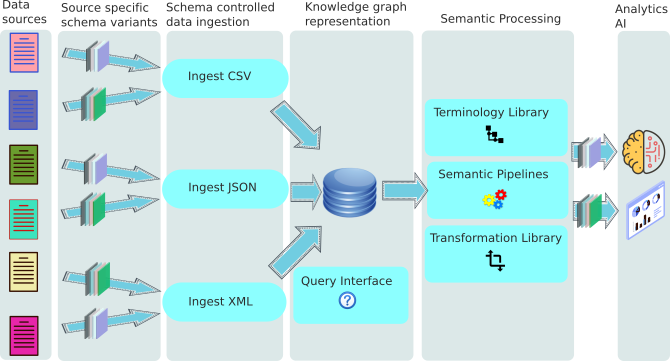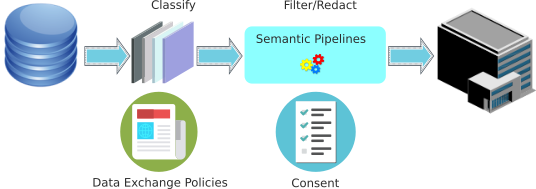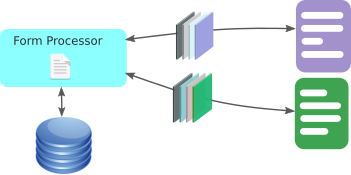Layered Schema Architecture (LSA) enables semantic interoperability between heterogeneous systems. LSA uses a schema base (such as FHIR schemas for health data) to define data structures, and overlays to add semantics, contextual metadata, and processing directives. A schema variant is the composition of the schema base and use-case specific overlays. Different schema variants can be used to ingest data from or export data to disparate systems. Each variant encodes source specific metadata and rules to ingest data into a knowledge graph, or target specific metadata and rules to translate the knowledge graph into another format.
Use Cases
Interoperability Across Domains
Schemas and vocabularies are usually domain specific. Achieving interoperability across domains requires manual mappings, which is further complicated by variations due to conventions and jurisdictions The layered schema architecture allows ingesting data from several sources that may have variations due to vendor specific extensions or jurisdiction. Ingested data can be annotated and translated into data usable for other domains.

Semantic Data Warehouse
A traditional data warehouse uses source specific ETL scripts to normalize and ingest data. Maintenance of such scripts relies heavily on internally developed tools and know-how. A semantic data warehouse based on the layered schema architecture replaces such ETL scripts with source specific schema variants. The schema variants can be reused in different scenarios and can be shared.

Privacy-Conscious Data Exchange
Data exchange policies and user consent dictate what types of data can be exchanged with whom and for what purposes. Traditionally this is solved by domain-specific algorithms that decide what can be shared. With the layered schema architecture, data elements are classified using overlays based on policies and privacy settings, and are filtered or redacted using semantic pipelines.

Data Display and Entry
Layered schema architecture allows building data entry/display applications that harmonize semantics to implement variations for language, locale, formatting, and jurisdiction. An application can use locale-specific overlays to generate views and entry forms.
